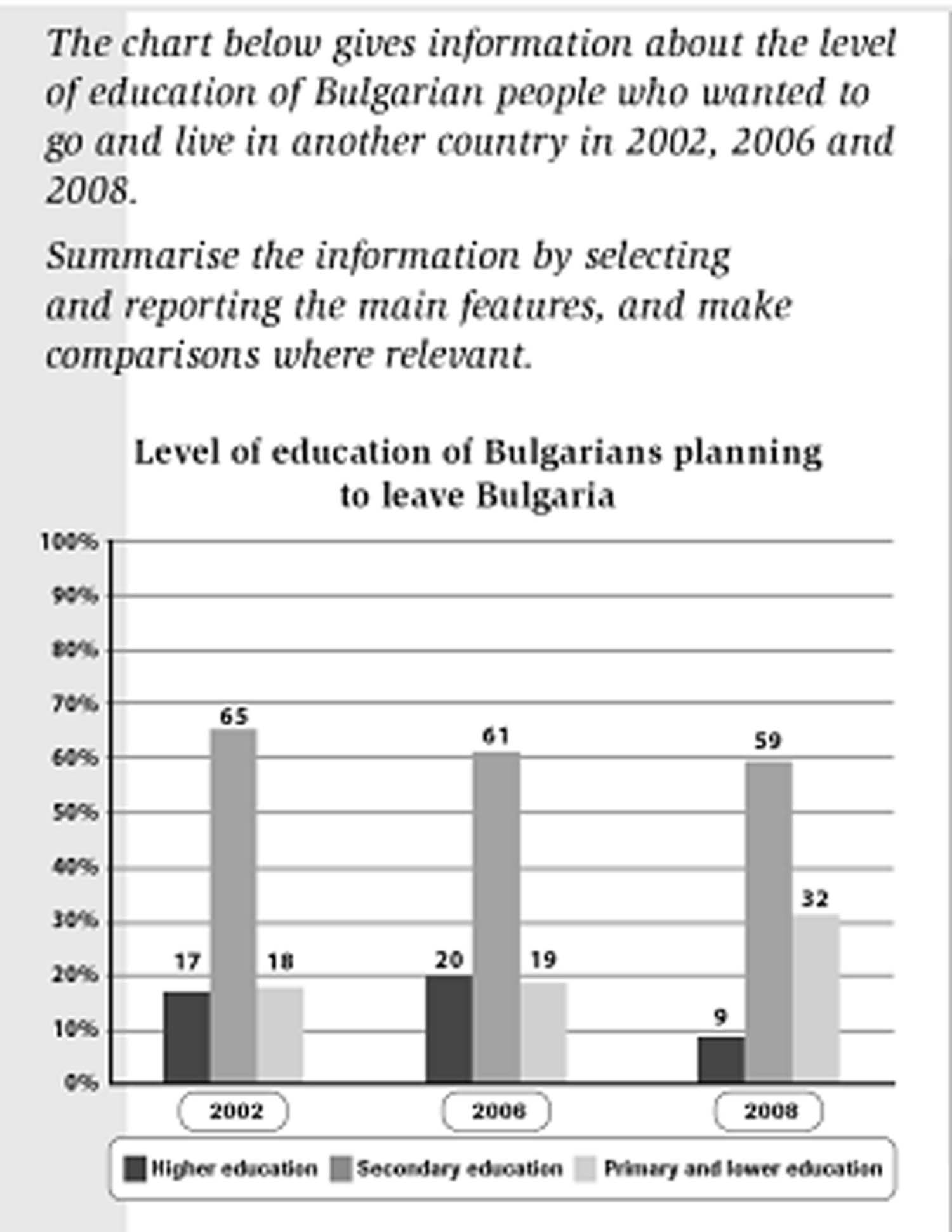The chart below gives information about the level of education of Bulgarian people who wanted to go and live in another country in 2002, 2006, and 2008.
A breakdown of percentage of the level education Bulgarians who visit and live in abroad in three different years in 2002, 2006, and 2008, is illustrated in the bar chart. Overall, the most obvious piece of information was that there is a change in the trend of level education Bulgarians who live in overseas. While secondary level decreased slightly, the percentage of primary and lower education rose extremely in the last period.
According to the data, the level education of Bulgaria's inhabitant who live in abroad was dominated by secondary education, which stood at 65% in 2002 and was followed by both primary/lower education and higher education, respectively 18% and 17%. Interestingly, 2008 showed the significant change in the pattern. While both secondary and higher education experienced a decrease, the Bulgarians who have primary and lower education increased dramatically, rose by nearly a third (32%).
Moving to A more detailed analysis, the percentage of the higher and primary level education showed a slow rise over a 12-month period in 2006, serially 20% and 19% followed by a slight fall from 65% to 61% for secondary education level. Uniquely, both higher and secondary experienced a decrease, each at 9 % and 59% when a significant increase was shown by percentage of primary and lower education level.
A breakdown of percentage of the level education Bulgarians who visit and live in abroad in three different years in 2002, 2006, and 2008, is illustrated in the bar chart. Overall, the most obvious piece of information was that there is a change in the trend of level education Bulgarians who live in overseas. While secondary level decreased slightly, the percentage of primary and lower education rose extremely in the last period.
According to the data, the level education of Bulgaria's inhabitant who live in abroad was dominated by secondary education, which stood at 65% in 2002 and was followed by both primary/lower education and higher education, respectively 18% and 17%. Interestingly, 2008 showed the significant change in the pattern. While both secondary and higher education experienced a decrease, the Bulgarians who have primary and lower education increased dramatically, rose by nearly a third (32%).
Moving to A more detailed analysis, the percentage of the higher and primary level education showed a slow rise over a 12-month period in 2006, serially 20% and 19% followed by a slight fall from 65% to 61% for secondary education level. Uniquely, both higher and secondary experienced a decrease, each at 9 % and 59% when a significant increase was shown by percentage of primary and lower education level.

Bulgarians_level_edu.jpg
